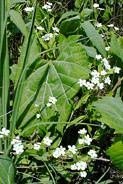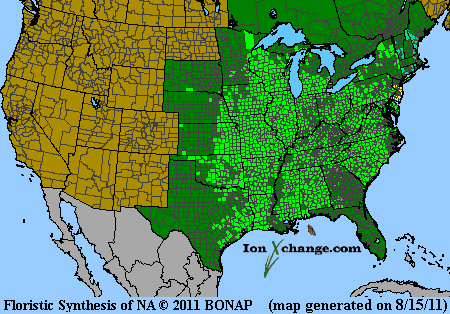 Loading... Please wait...
Loading... Please wait...- Home
- SEEDS
- SEED MIXES
- BUY PLANTS
- Info Request
-
Educational Videos
- Greenhouse Transplanting Demonstration
- Native Seed Cleaning demonstration at Ion Exchange Native Seed and Plant Nursery
- Attracting Butterflies
- Bidens - Bidens cernua Harvest Video
- Big Blue Stem Harvest
- Butterfly Milkweed Video
- Button Blazingstar - Liatris aspera Video
- Buttonbush - Cephalanthus occidentalis Video
- Canada Anemone - Anemone canadensis Harvest Video
- Cardinal Flower - Lobelia cardinalis Video
- Control Burn - Wildflower Field
- Cream Gentian - Gentiana flavida
- Culver's Root - Veronicastrum virginicum Video
- Cup Plant - Silphium perfoliatum Video
- Dormant Seeding | Planting
- Earthyman's Favorite Wildflowers Video
- Eco-Friendly Golf Course Seed Mix
- Floating Islands
- Fringed Loosestrife - Lysimachia ciliata Video
- Giant Yellow Hyssop - Agastache nepetoides Video
- Indiangrass - Sorghastrum nutans Video
- Iowa Prairie Partner Program
- Leadplant - Amorpha canescens (Potted) Video
- Meadow Blazingstar - Liatris ligulistylis
- Midland Shooting Stars - Dodecatheon meadii Video
- Native Plant Nursery Field Irrigation Experiment
- Nodding Onion - Allium cernuum Video
- Ohio spiderwort - Tradescantia ohiensis Video
- Old Man's Beard - Clematis virginiana blooms Video
- Oxeye Sunflower - Heliopsis helianthoides Video
- Prairie Spiderwort - Tradescantia bracteata
- Purple Coneflower - Echinacea purpurea Video
- Rain Garden or Water Garden Video
- Rattlesnake Master - Eryngium yuccifolium Video
- Riverbank Stabilization - Wetland Plants
- Rose Mallow - Hibiscus militaris Video
- Rosinweed - Silphium integrifolium Video
- Royal Catchfly - Silene regia
- Showy Tick Trefoil - Desmodium canadense Video
- Sneezeweed - Helenium autumnale Video
- Swamp Betony - Pedicularis lanceolata Video
- Swamp Milkweed - Asclepias incarnata Video
- Sweet Blackeyed Susan - Rudbeckia subtomentosa Video
- Tall Coreopsis - Coreopsis tripteris Video
- Urban Butterfly Garden
- Wild Bergamot - Monarda fistulosa Video
- Wild Geranium - Geranium maculatum Harvest
- Wild Goldenglow - Rudbeckia lanciniata Video
- Wild Petunia - Ruellia humilis Harvest Video
- Woodland Knotweed - Polygonum virginianum Video
- Yellow Coneflower - Ratibida pinnata Video
- Blog
- Resources
- Policies
Contact Us
Phone:
563-419-0837
or 563-535-7231
Email:
hbright@ionXchange.com
Browse Products
Add to Wish List
You Recently Viewed...
Our Newsletter
Product Description
"Flowering Spurge, Flat-topped Spurge, Milk Purslane, Milkweed, Snake Milk, Tramp's Spurge, White-flowered Milkweed, Wild Hippo"
Mostlike after Euphorbus, a physician to King Juba of Namidia and from the Latin corollata, meaning "with corollas".
Favors dry soils in open clearings, old pastures and roadsides throughout the Tallgrass Region. Blooms from June to October. Can grow to three feet and bears small, white flowers with five egg-shaped petal-like bracts (what we see as a flower are these bracts, not a true flower; the true flower is set in the cup formed by the bracts and is a green flower 1/12 of an inch long.
Native Americans used Flowering Spurge with a combination of other plant juices to dissolve warts and other growths on the skin. Combined with other plants, it served the Meskwaki as a laxative and cathartic and as a treatment for rheumatism and pinworms. The powdered bark was used almost across the continent as a purgative. The powdered root bark is very powerful and prone to overdose, but around the turn of the century, it enjoyed widespread use as an emetic, a diaphoretic, an expectorant and an epistatic. Again, despite it's propensity to irratating and potentially poisonous side effects, it was at one time considered the best remedy for dropsy. The common name "Spurge" comes from the Latin expurgate, meaning "to purge".
| Sun Exposure | Prairie, Savanna |
| Soil Moisture | Mesic, Dry Mesic, Mesic |
| Bloom Time |
Summer, Fall June, July, August |
| Bloom Color | White |
| Max Height | 3 feet |
| Wetland Code | UPL |
| Germ Code | C(30) |
| Seeds Per Packet | 75 |
| Seeds Per Ounce | 8,000 |
Edible Uses: Unknown
Medicinal Uses: The dried root is an excellent purgative, though it sometimes causes vomiting, it opens the body when other more violent purgatives fail to move it. The plant has irritating and uncertain qualities and so is seldom used in herbal medicine. A tea made from the leaves is used in the treatment of diabetes. An infusion of the bruised roots has been taken in the treatment of urinary diseases. The juice of the plant has been rubbed on the skin as a treatment for sores, eruptions etc, especially on children's heads. A decoction of the plant, mixed with other herbs (these are not specified) has been used in the treatment of cancer.
Herbal Uses: Unknown












